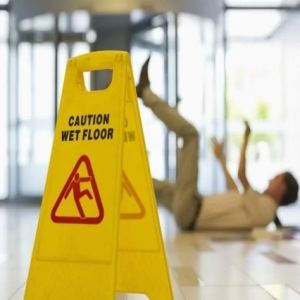Liabilities
- Tort Law
Risk: The user was injured on the premises due to the defective state of the coworking space.
Coworking spaces, like any other type of premises, can be susceptible to defects that can create a risk of injuries for users. Especially considering how coworking spaces often provide shared amenities and equipment, this can create more potential for accidents to happen.
Liability: Occupier Liability
Q1. Are Operators Responsible for the Premises ?
ANS: In most cases of co-working space, YES.
According to Section 2(2) of the Occupiers Liability Ordinance (Chapter 314):
- An occupier needs to have some level of control associated with and arising from the presence in, use of, or activities in the coworking premises.
- Operators of coworking spaces often fulfill this requirement because they have control over the premises, manage access, and provide services to the users of the coworking space.
Q2. Who Are the Operators Responsible for ?
ANS: They are responsible for their visitors, but not trespassers.
According to Section 2(2) of the Occupiers Liability Ordinance (Chapter 314):
- The injurer must be permitted expressly / impliedly by the operator to be on the premises.
- In the case of coworking spaces, users who have signed a contract or agreement with the operator would typically be considered visitors.
- As a result, operators would owe a duty of care to the authorized users of the coworking space.
- However, if someone does not have express or implied permission to be in the coworking space, they would be considered a trespasser and operators do not owe any duty of care towards them.
Q3. What is the Operator’s Duty of Care ?
ANS: Be active in protecting your visitors.
According to Section 3(2) of the Occupiers Liability Ordinance (Chapter 314):
- The operator has an affirmative duty to take active measures to ensure that visitors are reasonably safe while using the coworking space.
- The standard of care required of the operator is that of what is reasonably necessary in the circumstances.
Mitigation: How can you prevent liability arising in coworking spaces?
Method 1: Warnings
Operators can utilize warnings as a means to discharge their responsibility under Section 3(4) of the Occupiers Liability Ordinance (Chapter 314).

Important Notes:
- Warnings must be sufficient to communicate the potential hazards to users
- The particular danger must be specified (ex. ‘caution!’ is not enough)
- Permanently affixed notices may not be effective
- Warnings must be posted at suitable locations within the coworking space where users are likely to notice and read them
Method 2: Express Terms in Contracts
Operators can define the level of responsibility they assume towards users through explicit terms in the contract.

READY?
Looking to safeguard your legal responsibilities? Utilise our Co-working Space Contract Generator for added assurance!
Disclaimer: Nothing in this website is intended to be nor should be construed as legal advice. This is an educational project created by students. Please consult your lawyer for legal advice.


